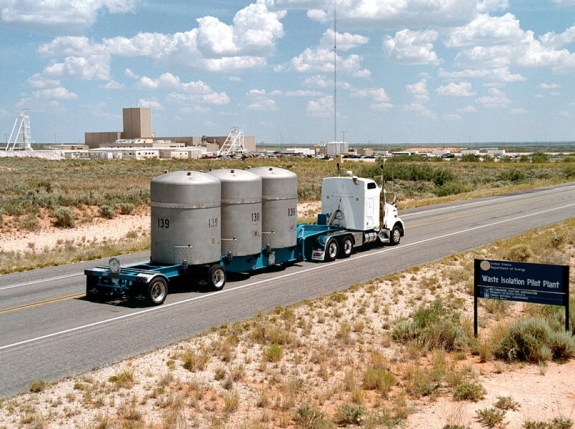
Radiological shipments are accomplished safely. Annually, about 400 million hazardous materials shipments occur in the United States by rail, air, sea, and land. Of these shipments, about three million are radiological shipments. Since Fiscal Year (FY) 2004, EM has completed over 150,000 shipments of radioactive material/waste.
SUPPORTING PROGRAMS
SAFE TRANSPORTATION OF RADIOLOGICAL SHIPMENTS
- Transportation Emergency Preparedness Program (TEPP)
TEPP provides the tools for planning, training and exercises, and technical assistance to assist State and Tribal authorities in preparing for response to a transportation incident involving DOE shipments of radioactive material. - National Transportation Stakeholders Forum (NTSF)
Collaboration and coordination with jurisdictions along the transportation corridors is key in accomplishing the EM cleanup mission. The purpose of the NTSF is to bring transparency, openness, and accountability to DOE's offsite transportation activities through collaboration with state and tribal governments.
PACKAGING CERTIFICATION PROGRAM
FISSILE AND TYPE B PACKAGINGS
The Atomic Energy Act of 1954, as amended, gives DOE broad authorities to regulate all aspects of activities involving radioactive materials that are undertaken by DOE or on its behalf, including transportation. The DOE manages a program for certification of fissile and Type B packagings which conform with U.S. Department of Transportation and U.S. Nuclear Regulatory Commission requirements. For additional information about the DOE Packaging Certification Program, visit the Radioactive Material Packaging (RAMPAC) website. The program includes the following:
- providing guidance for preparing Safety Analysis Reports for Packaging,
- reviewing and approving packaging designs,
- issuing DOE Certificates of Compliance
- reviewing and recertifying Certificates of Compliance
- curtailing and suspending the use of specific packages, when warranted; and
- reviewing and approving quality assurance programs for Type B and fissile materials radioactive materials packagings.
The Packaging Certification Program conducts routine training for radioactive packaging activities related to Safety Analysis Report for Packagings preparation, and packaging quality assurance, maintenance and operations.
OPERATIONS
DOE successfully completes thousands of shipments each year. The shipments have included a variety of waste types (e.g., transuranic waste, low-level waste, mixed low-level waste, used nuclear fuel ) primarily by highway and rail. Under DOE, the National Nuclear Security Administration (NNSA) safely and securely transports nuclear weapons, weapons components, and special nuclear material to meet projected NNSA, Department of Defense, and other customer requirements.
- TRANSCOM
An unclassified tracking and communication system which can monitor the progress of various "high visibility" shipments. Since September 2001, TRANSCOM has been used to monitor over 12,000 DOE high visibility shipments. - RADCALC
Permits registered users to access software used in packaging and transportation determinations. - RADTRAN
Computer code used to conduct transportation risk assessment for radioactive material. - ATMS
Automated Transportation Management System.